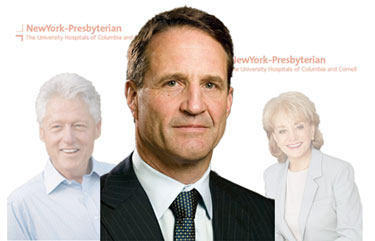“What Happens to Aortic Valve Debris During TAVR?” asks Shripad
Written By: Adam Pick, Patient Advocate, Author & Website Founder
Medical Expert: Craig Smith, MD, Chief of Cardiac Surgery, NewYork-Presbyterian / Columbia University Medical Center
Page Last Updated: June 7, 2025
I received a ton of GREAT questions for our recent Ask Adam Anything: Facebook LIVE Sessions at the Heart Valve Summit. One of the questions that I didn’t have time to answer came in from Shripad who asked, “Hi Adam – In the transcatheter aortic valve replacement procedure (TAVR), what happens to the debris of the old diseased aortic valve which is crushed by the balloon catheter? If the debris cannot be removed, can tiny particles of the debris cause stroke or heart attack? Thanks!”
Before answering Shripad’s question, I thought it would be helpful to show how a TAVR is implanted. As you can see in this video animation, a TAVR device is positioned inside a stenotic aortic valve and then expanded using a balloon. During that expansion, the new aortic valve essentially “smushes” the old valve out of the way. That is why Shripad’s question is so interesting. What happens to the defective leaflets and/or calcium deposits that caused the aortic valve disease?
Dr. Craig Smith Says…
Now that we understand how a TAVR works and why aortic valve debris may occur, let’s answer this very important question.
To help Shripad and our patient community learn more about TAVR and its associated stroke risks, I wanted to get an expert opinion. For that reason, I contacted Dr. Craig Smith, the Chair of the Department of Surgery at NewYork-Presbyterian / Columbia University Medical Center in New York City. As you might recall, Dr. Smith was a Co-Principal Investigator of the PARTNER clinical trial that led to the 2011 FDA-approval of the SAPIEN, the first TAVR device for inoperable patients.
You may also remember that Dr. Smith performed surgery on President Bill Clinton, Barbara Walters and many patients from the HeartValveSurgery.com community including Linda Tamburrino, Bob Pratt, and Anne McCormick.

In Dr. Smith’s email response to me, he wrote:
Shripad is asking a very logical question. In the earliest days of its clinical use, aortic valve debris was the most feared theoretical peril of TAVR. Although we can’t explain the mechanism in precise cellular detail, experience has proven that embolization (debris escaping into the circulation) is much less common than most of us imagined. In the earliest randomized trials – in very high risk patients – stroke risk for TAVR appeared to be higher than for surgical aortic valve replacement (SAVR). However, subsequent experience in randomized and non-randomized trials suggests that the stroke risk with TAVR is roughly equivalent to the risk of stroke with SAVR.
Dr. Smith then addressed the use of new devices to help minimize stroke risks for TAVR and SAVR:
To address exactly the concern your patient has raised, development of devices to capture debris is ongoing, and shows some promise of further minimizing embolization, for use in TAVR and SAVR.
I hope that helped Shripad (and perhaps you) better understand how a TAVR works, what happens to aortic valve debris during this non-invasive procedure, the potential risks of TAVR and SAVR, as well as the steps being taken to minimize such risks during aortic valve replacement operations. As I learn more about these new devices that may minimize embolization for patients, I will definitely update our community. So, stay tuned!
Thanks Shripad! Thanks Dr. Smith!
Thanks to Shripad for sending me such a great question! And, a special thanks to Dr. Craig Smith for sharing his clinical experience and research with our community! So you know, Dr. Smith has been a long-time supporter of our community and I can not thank him enough for his educational contributions specific to exercise and durability of heart valve replacements, mitral regurgitation progression, pericardium adhesions, and so many more topics.
Related Links:
- Discover the Columbia University Medical Center Heart Valve Microsite
- Cerebral Protection and Stroke Risk During TAVR
- Visit Our TAVR Education Center
Keep on tickin!
Adam
|
Barb Brown says on November 20th, 2018 at 3:42 pm |
|
Craig Smith, MD replaced my aortic valve in Spring 2017….I was home on 5th day….thanks to him and his extraordinary team…who follow you daily post operation….Highly recommend him and Columbia! |
 |
|
Anne Tringle says on December 4th, 2018 at 9:03 pm |
|
i have a question when i need my aortic valve replacement done again it is almost 20 years old how do they remove st jude stainless steel valve without going down my chest ,was told they cant dothat again? |
 |













